A cryptocurrency trading genius born in the 2000s in Shanghai now has a monthly income of 7 figures and an annual income of 8 figures. Not only is she beautiful and has positive values, but she is also very skilled. She is a representative of the new generation of post-2000s. She is also a good friend of mine in the cryptocurrency circle for many years. We met a while ago and talked about her glorious history. She spent 5 years learning and practicing in the cryptocurrency circle. She said that making money is too easy. Many people think it is too complicated. You only need to master the simplest K-line and make orders. Her winning rate is as high as 85%, and she is undefeated.
Through my own practice, I have achieved a winning rate of 80%. I have compiled this information in the past few days and would like to share it with those who are interested in learning and mastering it together.
These are the stages and time cycles of the bull and bear markets in the cryptocurrency market over the years: From the four stages of bear market-pre-bull market-bull market-big bull market, the cryptocurrency market has seen amazing growth in each time period, and the opportunities hidden in it are obvious!
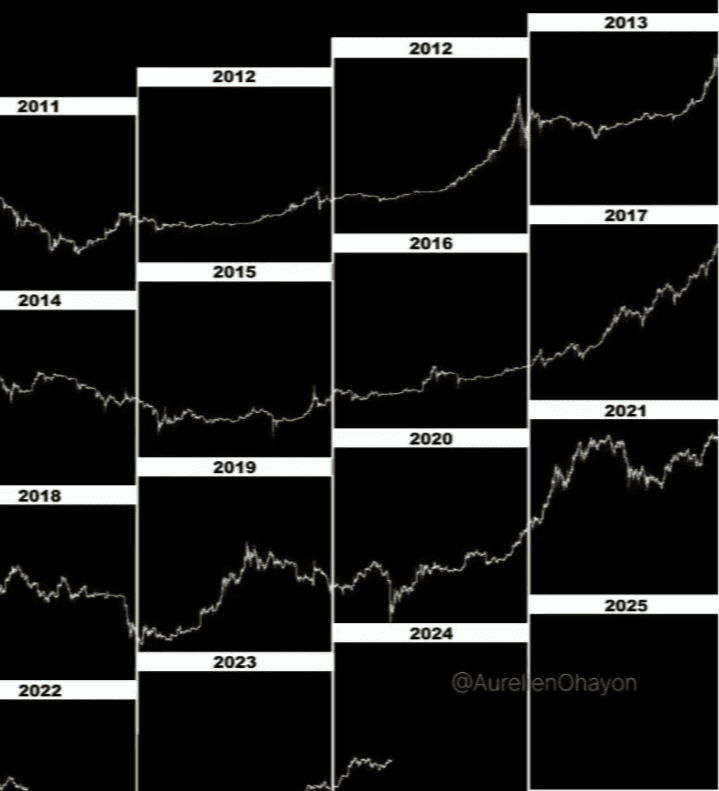
The cyclical nature of Bitcoin is very strong.
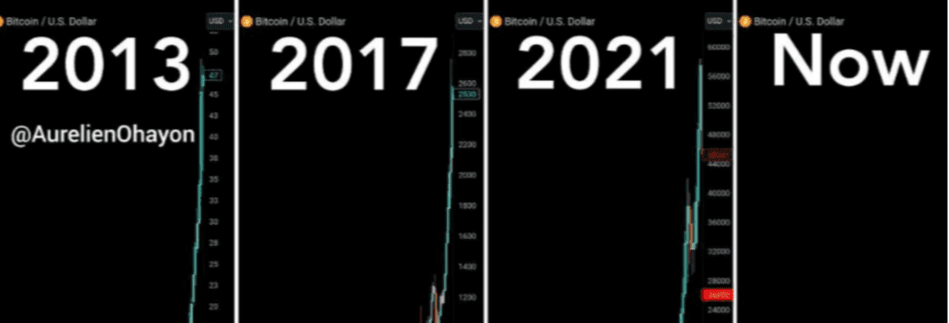
As shown in the above figure, the three halving cycles in history (2012, 2016 and 2020) have all led to huge bull markets.
The secret to a 7-digit monthly income and an 8-digit annual income is to master the K-line chart and trade based on the patterns, with a 100% winning rate.
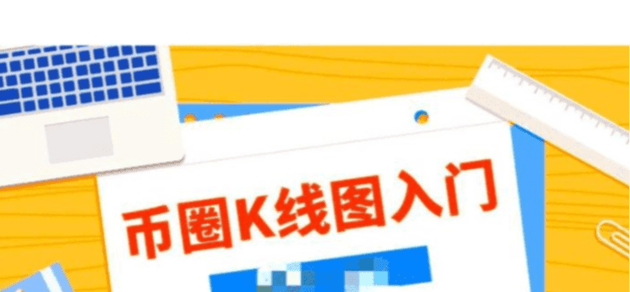
In the cryptocurrency market, technical analysis, often referred to as candlestick charts, is a crucial indicator for predicting short-term market trends. Whether or not you believe in or admire technical analysis, understanding candlestick charts is essential.
Ignoring K-line analysis is a major taboo in the cryptocurrency world! Leaving aside technical issues like charts, indicators, and the long-short game, fundamental information like a currency's price trend, trading volume, lows, and highs can all be seen in the K-line chart.
What is K-line
K-line charts are a must-read for anyone entering the secondary market. K-line charts, also known as candlestick charts, originated during the Tokugawa Shogunate era in Japan. Invented by Homma Munehisa, they were first used to record rice market prices. Their sophisticated and unique plotting techniques later led to their introduction into the stock and futures markets. Through K-line charts, we can visualize market fluctuations, including opening and closing prices, as well as highs and lows, over a specific period.
What's the use of looking at the K-line chart for me?
It can help you develop better investment strategies and guide you to choose the best time to buy and sell. For those who believe in hoarding coins, it is also necessary to be able to understand it. The trading interfaces of major exchanges are dominated by K-line charts. It is actually embarrassing to be in the cryptocurrency circle if you can't understand it.
What information can be obtained from looking at the K-line chart
Through the candlestick chart, you can see the price trend for a specific period (30 minutes, 1 hour, 1 day, 1 week...), including the opening price, closing price, highest price, and lowest price. You can also see the fierce battle history between bulls and bears.
Key Points
The composition of the K-line chart
The main components of the K-line chart are two: the positive line and the negative line.
Each candlestick chart represents four daily prices: the highest price, the lowest price, the opening price, and the closing price. The area between the opening and closing prices is drawn as a "rectangular solid," and the highest and lowest prices are connected by a line. The combination of the two forms the candlestick chart.

When the closing price is greater than the opening price, the bar is green and the price rises, which we call a bullish candlestick.
When the closing price is lower than the opening price, the bar is red and the price falls, which we call a negative line.
Most exchanges and analysis software in the cryptocurrency world use green to represent bullish candlesticks and red to represent bearish candlesticks. Generally speaking, a bullish candlestick represents long positions (buys) and a bearish candlestick represents short positions (sells). The candlestick chart will show the corresponding candlestick pattern, whichever side has the stronger force.
For example, if buying power is greater than selling power today, then the K-line on the daily chart will be a positive candlestick (green bar). Conversely, if a negative candlestick (red bar) appears, it means selling power is stronger.
Note: In the Chinese stock market, the yang line is red and the yin line is green; in some charts, the yang line is a solid column and the yin line is a hollow column.
What is a shadow line
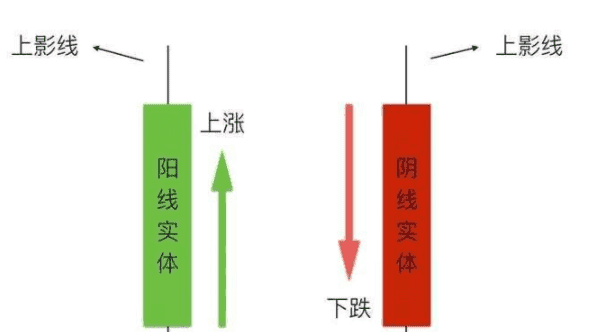
Shadows are thin lines above and below the bar, representing the difference between the daily high and low prices and the closing price. Longer shadows indicate greater resistance. A longer upper shadow indicates greater resistance to an upward move, while a longer lower shadow indicates greater resistance to a downward move. Whether it's a bearish or bullish candlestick, the line that extends upward from the bar is called the upper shadow, while the line that extends downward from the bar is called the lower shadow.
What is a bull-bear battle?
Bulls and bears are two legions, the bulls are represented by the green legion, and the bears are represented by the red legion. The two sides have different views. The bulls believe that the price will rise, and the bears believe that the price will fall, so battles often occur. The bullish green legion is a group of people who are bullish on the price. They will buy and raise the price. The bearish red legion is a group of people who are bearish on the price. They will sell and make the price fall.
There will be a battle in each time period. If the red army of the short side wins, the price will fall and the K-line chart will show red. If the red side gains a huge advantage, it means that the power is great, and the entity shown on the K-line chart will be larger. If the green side has weak resistance, it means that the resistance it creates for the red side is too small, and the shadow line shown on the K-line chart will be very short.
Small Yang Star, Small Yin Star
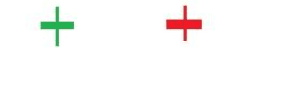
A. Little Yang Star:
This means that the price of the Chinese currency fluctuated very little throughout the day, the opening price and closing price were extremely close, and the closing price was slightly higher than the opening price.
The appearance of a small Yang star indicates that the market is in a chaotic and unclear stage, and the future rise and fall cannot be predicted. At this time, a comprehensive judgment should be made based on the shape of the previous K-line combination and the price range at that time.
B. Small Yin Star:
The chart of a small Yin star is similar to that of a small Yang star, except that the closing price is slightly lower than the opening price. This indicates that the market is weak and the direction of development is unclear.
Small Yang line, small Yin line

C. Small Yang Line:
Its fluctuation range is larger than that of the Yang Star, and the bulls have a slight advantage, but the upward attack is weak, indicating that the market development is confusing.
D. Small Yinxian:
It means that the short side is suppressing the market, but the force is not strong.
Bald Yang Line, Bald Yin Line

E. Bald Yang candlestick:
① If a bullish candlestick appears in a low-price range, the intraday chart shows a gradual rise in price after bottoming out, accompanied by increased trading volume, signaling the beginning of an upward trend. This indicates that trading volume shrinks during the bottoming process, then increases evenly as the price climbs, ultimately closing with a bullish candlestick, signaling a bullish outlook. If it appears during an upward trend, it indicates continued optimism.
② If a hanging bullish candlestick appears in the high price area, the price of the currency may be pushed up by the main force to sell, so you need to pay attention.
F. Bald Yinxian:
If this type of line appears in the low price zone, it means that the intervention of bargain hunting has caused the currency price to rebound, but the strength is not great.
Yang candlestick with lower shadow, Yin candlestick with lower shadow
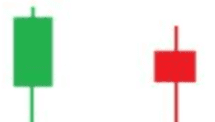
G. Yang candlestick with lower shadow:
Its appearance indicates that the attack of the bulls and bears in the battle is steady and powerful, the currency price first falls and then rises, and the market has the potential to rise further.
H. Lower shadow line:
When it appears in the low price zone, it means that the lower level has strong support and the currency price may rebound.
Upper shadow bullish candlestick, upper shadow bearish candlestick

Ⅰ. Bullish candlestick with upper shadow:
① It shows heavy selling pressure from above when the bulls are attacking. This kind of pattern is often seen in the main force's test of the market, indicating that there are many floating chips at this time and the upward trend is not strong.
② Indicates that the bullish upward attack has been blocked and the price has fallen back, with heavy selling pressure on the upper block. It is unclear whether the upward trend can continue.
J. Upper shadow line:
When it appears in the high price zone, it means that there is severe selling pressure on the upper end, the market is weak, and the currency price may reverse and fall; if it appears on the rising path in the middle price zone, it indicates that there is still room for growth in the future.
Bare-footed Yang line, Bare-footed Yin line

K. Bare-footed Yang candlestick:
It indicates that the upward momentum is very strong, but there are differences between bulls and bears at high prices, so you should be cautious when buying.
L. Bare-footed Yinxian:
The appearance of a bare-footed bearish candlestick indicates that although the price of the currency has rebounded, there is heavy selling pressure on the upper side. The bears took advantage of the situation to suppress the price and caused the currency to close with a bearish candlestick.
Piercing Yang Line, Piercing Yin Line

M. Piercing Bullish candlestick:
① The bulls have taken the upper hand and are seeing a wave of upward movement. The price of the currency is rising steadily with the support of trading volume, indicating a bullish outlook.
② For the same piercing-head-breaking-feet bullish candlestick, if the price trend shows a sideways or falling trend for most of the time and suddenly rises at the end of the market, it indicates that the price may open high and then fall.
③ If the price trend shows a wide range of oscillation throughout the day and then rises in volume at the end of the day, it may be that the main force of the day uses oscillation to wash out the passengers, and then easily pushes up the price, and the market outlook may continue to be bullish.
N. Piercing Yin Line:
Contrary to the above-mentioned piercing bullish candlestick situation, it indicates that there is a high possibility that the currency price will fall.
Bald and barefoot Yang line, bald and barefoot Yin line
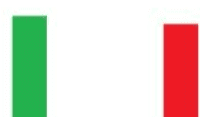
O.Bald and barefoot bullish candlestick:
It shows that the bulls have firmly controlled the market, are attacking wave by wave, forcing out short positions step by step, and the upward trend is strong.
P.Bald head and bare feet Yin line:
The price of the currency was sideways, and suddenly it went down in large volume at the end of the trading session, indicating that the bears finally took the dominant advantage in the battle, and it was more likely to open low.
If the price of the currency goes through a wave of decline, it means that the bears have gained the upper hand and the bulls are unable to resist. The price of the currency is gradually being pushed down and the outlook for the market is bleak.
T-shaped line, inverted T-shaped line

Q. T-shaped line:
When it appears in the low price zone, it indicates that the lower level has strong support and the currency price may rebound.
R. Inverted T-shaped line:
When it appears in the high price zone, it indicates that there is severe selling pressure on the upper side, the market is weak, and the currency price may reverse and fall;
If it appears on the rising path of the mid-price range, it indicates that there is still room for growth in the future.
Doji
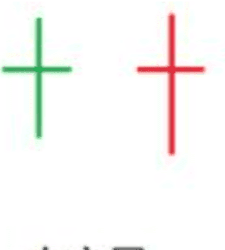
S. Doji:
This type of line is often called a changing doji. Regardless of whether it appears in the high or low price zone, it can be regarded as a top or bottom signal, indicating that the general trend is about to change its original direction.
Summary of K-line types
In addition to the 19 types of K-line mentioned above, we can also classify K-line types based on the body and shadow of the K-line. They can be divided into four major categories.
①: A K-line with only a real body and no upper or lower shadows is called a bald K-line.
It indicates that one of the buyers and sellers has the upper hand and becomes the dominant party in the market transaction.
②: A small Yin or Yang entity without upper or lower shadows.
The closing price is the highest or lowest price, and the opening price is the lowest or highest price. Fluctuations are limited, and the battle between buyers and sellers is less intense. When the K-line is a positive candlestick, buyers have a slight advantage; when it is a negative candlestick, sellers have a slight advantage. This phenomenon typically occurs during price consolidation or when the price gaps down or up. While it has little significance during consolidation periods, a large gap in the market becomes extremely significant, signaling a complete victory for one side and a complete collapse for the other.
③: A large bullish candlestick body without upper and lower shadows.
It mostly appears when the currency market is on the rise, and the currency price continues to rise. Although there are pullbacks, it quickly resumes its upward trend. Buyers are determined to push the currency price up.
④: A large black candlestick body without upper and lower shadows.
It mostly appears when the price of the currency is falling, which is exactly the opposite of the above meaning.
In the cryptocurrency market, technical analysis, often referred to as candlestick charts, is a crucial indicator for predicting short-term market trends. Whether or not you believe in or admire technical analysis, understanding candlestick charts is essential.
Ignoring K-line analysis is a major taboo in the cryptocurrency world! Leaving aside technical issues like charts, indicators, and the long-short game, fundamental information like a currency's price trend, trading volume, lows, and highs can all be seen in the K-line chart.
K-line pattern
Relying on the K-line pattern to provide us with double protection and give us confidence
Trigger our transactions, so it is equally important to learn the K-line pattern
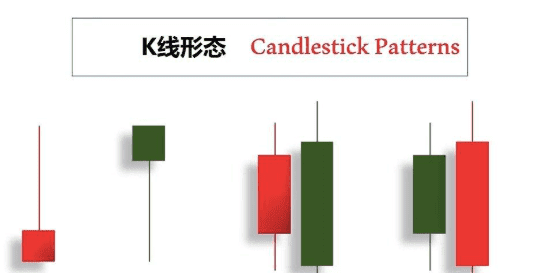
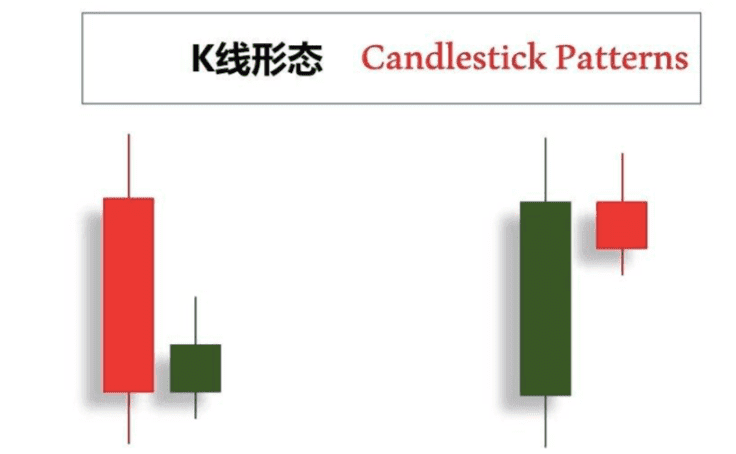
The bullish pregnancy line is composed of a Yin line and a small Yang line. The Yang line, whether it is the body or the shadow, is within the previous K line.
The bearish candlestick is the opposite, the body and shadow of the black candlestick are both within the previous white candlestick.
Generally speaking, there are two common ways to trade this pattern:
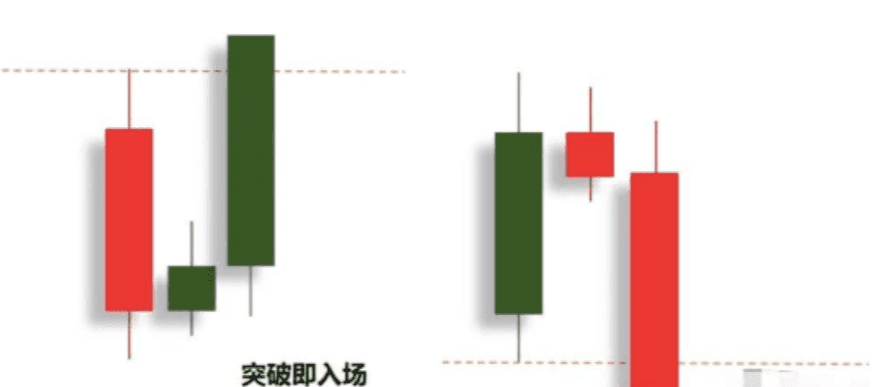
First, when the price breaks through the high or low of the previous K-line, regardless of whether the latest K-line has ended or not, we will enter the market to buy or sell, which is a left-side transaction.
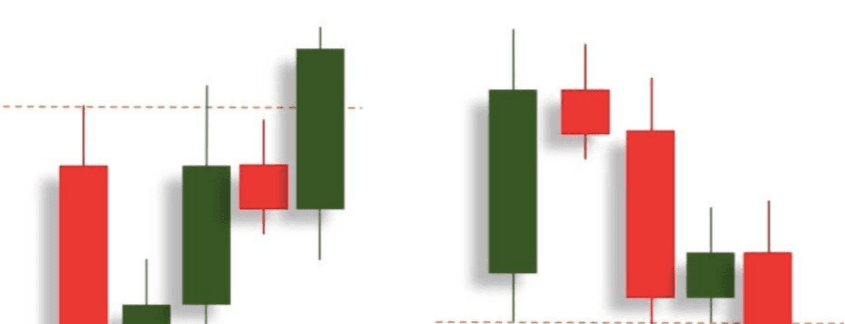
The second, more conservative approach is to wait for the current K-line to actually end at the high or low level of the previous K-line and to establish a stable direction before entering the market.
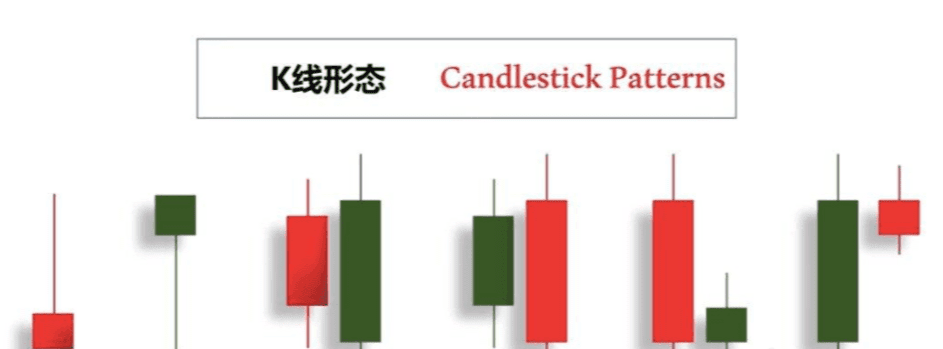
Part 3: Chart Patterns
You will find that the market will continue to do one thing through repeated patterns, and the chart pattern provides such a trace, so that we can follow it and find out what the market is doing at this moment and the logic behind it.
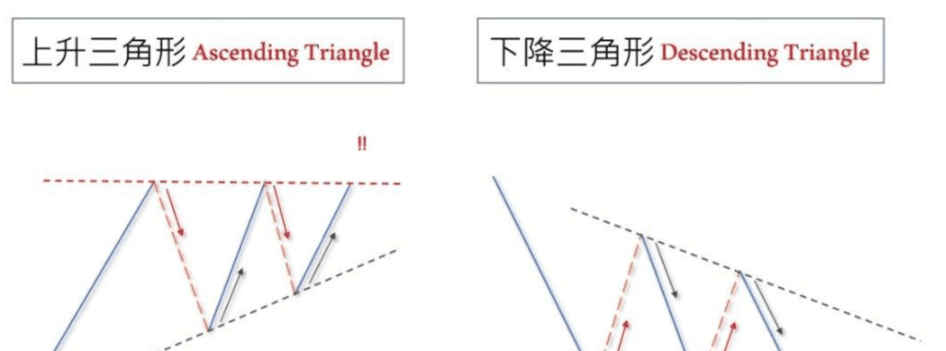
Chart patterns often seen on the market
Ascending triangle
Descending triangle
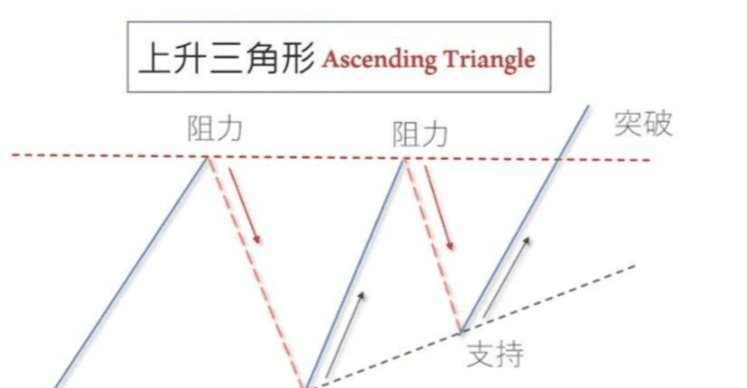
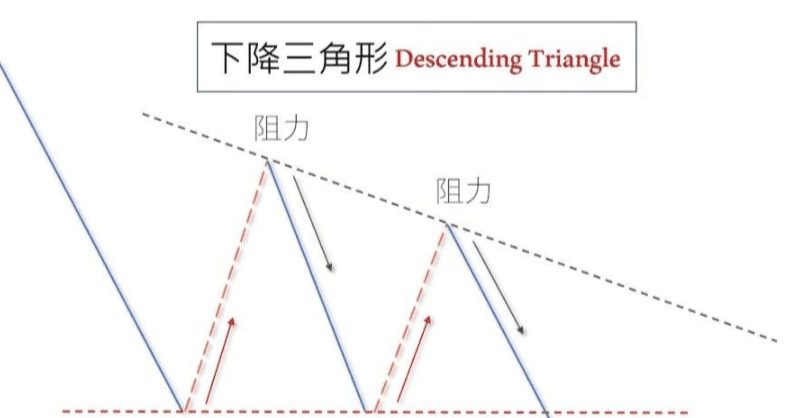
The same is true for the descending triangle. The impact of the horizontal support level on the price is smaller each time than the previous breakthrough. Finally, it breaks through successfully and continues a downward trend.
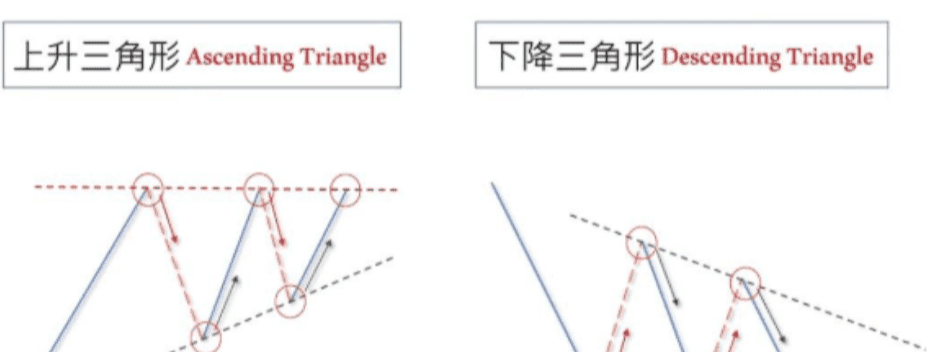
The long bear market has no end in sight. Under the current market conditions, many people can no longer bear it. They face two choices: the first is to stop moving forward and exit the cryptocurrency circle; the second is to hold on and wait for the next bull market to begin.
Only a small number of people can survive in a bear market. A bull market is like a gust of wind, where even pigs can fly, while a bear market is a Shura field, where only the fittest survive. So how can one survive in a bear market?

Lock up your positions, stay away from the cryptocurrency market, and return when the bull market arrives. This rule requires a high level of human nature, and there are very few people who can truly ignore it, and those who can do it are not ordinary people.
Regular investment reduces risk. Suitable for those with small initial investments, relatively stable personal income, and a high probability of low future returns.
Pick the bottom when the opportunity arises. This is a risky business, and it is not easy for experts to buy stocks halfway up the mountain. It is not something that ordinary people can do well to turn short-term investments into long-term investments and long-term investments into shareholders.
Short-term operation, sell high and buy low. The risk is five stars, greater than the fourth type. If you do this method well, you will not be trapped in a bear market.
Cut your losses, stay away from the cryptocurrency market, and don't look any further. The downside of this rule is that if you sell at the end of a bear market and then a bull market follows, you will regret it for the rest of your life. To avoid lifelong regrets, this option is not recommended.
How should we invest and trade in a bear market?
1. Stick to a long-term investment plan that aligns with your financial goals
For investors, regardless of bull or bear market conditions, it's crucial to stick to a long-term investment plan. During bear markets, the internet is flooded with pessimistic and bearish information, but it's best to ignore this market noise and focus on long-term investment returns. Some short-term traders quickly change their investment strategies in an effort to protect capital or maximize returns, but the reality is that if you find yourself in a bear market, it's likely too late to change your asset allocation.
2. Avoid timing your entry and exit of the market
A common mistake retail investors make is trying to avoid a bear market by selling their holdings. While exiting at a high and re-entering at a low may seem simple, it's actually not easy. Even if investors sell before a decline, they may not be able to re-enter the market because the market often turns sharply upward when it's not optimistic. Historically, investors who exit during bear markets often fail to maximize their asset returns.
Three: Don’t guess the top or the bottom
In a bear market, investors often want to sell all their stocks at once, but selling in batches may actually be a better option. Don't worry about timing your entry and exit; dollar-cost averaging (whether buying or selling) is a better approach.
4. Hoarding coins
Most of the chips on the market are very cheap. Accumulating cheap chips is the currency to be accumulated in the bear market, and the coins accumulated in the bear market are the chips to make money in the next bull market.
Five: Strengthen theoretical learning and tap into potential coins
Learning is the key to continuous progress. This world is constantly changing, projects are emerging and emerging, and technologies are constantly being updated and iterated. If you don't learn, you will be eliminated. In this bear market, diligently learning and accumulating experience will serve as a bargaining chip for future success.
The above is the trading experience that Lao Bo shared with you today. Many times, due to your doubts, you lose many opportunities to make money. You dare not boldly try, to contact, to understand, how can you know the pros and cons? Only when you take the first step, you will know how to take the next step. With a cup of warm tea and a word of advice, I am both a teacher and a good friend.
Meeting is fate, knowing is destiny. Lao Bo firmly believes that those who are destined to meet will eventually meet, while those who are not destined to meet will pass by as fate would have it. The investment journey is long, and temporary gains and losses are just the tip of the iceberg. Remember, even the wisest will make mistakes, and even the foolish will gain something. No matter how you feel, time will not stand still for you. Put aside your worries, stand up again, and move forward.


